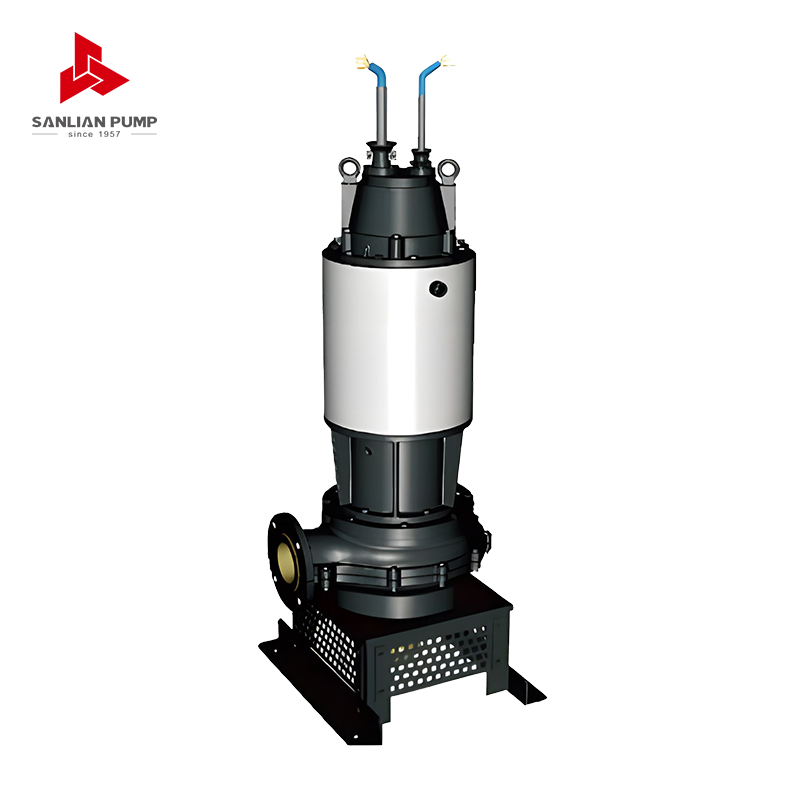Sanlian Pump Industry Group is a manufacturing enterprise based on water supply and drainage equipment. The group company integrates R&D, design, casting, production and sales, and provides customers with modern, digital and intelligent comprehensive solutions for fluid transportation and integrated systems.
How does pump head, flow rate, and motor power determine the overall efficiency of a submersible pump?
Submersible pumps are widely used in industries ranging from water supply and wastewater management to mining and chemical processing. Their efficiency—the ability to convert electrical energy into hydraulic energy with minimal losses—is a critical factor in operational performance, energy consumption, and long-term reliability. Among the most important parameters affecting submersible pump efficiency are pump head, flow rate, and motor power. Understanding the interplay of these factors helps engineers and operators optimize pump selection, reduce energy costs, and extend equipment life.
Pump Head and Its Role in Efficiency
The pump head represents the height to which a pump can raise water or fluid, typically measured in meters or feet. It is directly related to the pressure generated by the pump. The pump head depends on both the system requirements and the pump design, including impeller geometry and rotational speed.
High pump head requires more energy from the motor to overcome gravitational and frictional losses in the system. If a pump is operating far below its designed head, it may experience recirculation within the impeller, causing inefficiency and potential damage. Conversely, operating above the design head can overload the motor, reduce efficiency, and shorten the pump’s lifespan. Therefore, selecting a pump that matches the required head for a given application is critical to maintaining high efficiency.

Flow Rate and Its Impact
The flow rate (measured in liters per second, gallons per minute, or cubic meters per hour) is the volume of fluid the pump moves over time. Efficiency is optimized when the pump operates near its best efficiency point (BEP)—the flow rate at which the pump converts the maximum amount of motor power into hydraulic power with minimal losses.
Flow rates below or above the BEP can cause several issues:
- Low flow rates: The pump may run inefficiently, experience excessive heat in the motor, and develop internal recirculation, increasing wear on the impeller and bearings.
- High flow rates: Cavitation may occur, causing vibrations, noise, and erosion of internal components, which reduces efficiency and can lead to early failure.
Matching the pump’s design flow rate to the system requirements ensures that energy is used effectively, minimizing waste and extending operational life.
Motor Power and Energy Conversion
Motor power determines the amount of electrical energy supplied to the pump. Ideally, the motor should provide sufficient power to achieve the desired head and flow rate without operating continuously at maximum load.
Operating a motor that is too small can lead to overheating and reduced torque, limiting the pump’s ability to reach its target head and flow. On the other hand, an oversized motor may increase initial costs and operate below its optimal efficiency range, wasting energy. Modern submersible pumps often use variable frequency drives (VFDs) to adjust motor speed, allowing fine-tuning of pump output to match changing system demands and maintain high efficiency.
Interrelationship Between Head, Flow, and Motor Power
The overall efficiency of a submersible pump depends on the balance between pump head, flow rate, and motor power:
- At the best efficiency point, the head, flow, and motor power are optimally matched, resulting in minimal hydraulic and mechanical losses.
- Deviations from this balance reduce efficiency, increase wear on components, and raise operating costs.
- System design—including piping, valves, and inlet/outlet conditions—also affects this balance, as friction losses and turbulence influence both head and flow rate.
Proper pump selection involves analyzing system curves that plot head versus flow and comparing them with the pump’s performance curve. This allows engineers to ensure that the operating point is near the BEP, where energy conversion is maximized and motor power is used most effectively.
Practical Considerations
- Maintenance: Regular inspection of impellers, bearings, and seals ensures that the pump maintains its designed head and flow, preventing efficiency losses over time.
- Material selection: High-quality materials reduce friction and wear, helping the pump maintain performance under various operating conditions.
- System optimization: Minimizing unnecessary bends, reducing pipe roughness, and controlling valve openings helps maintain the intended flow and head, improving overall pump efficiency.
Conclusion
The efficiency of a submersible pump is strongly influenced by pump head, flow rate, and motor power. Maintaining a balance among these factors ensures that electrical energy is effectively converted into hydraulic energy, minimizing losses and maximizing operational life. Engineers must consider system requirements, pump performance curves, and motor sizing to achieve optimal efficiency. Proper installation, regular maintenance, and system optimization further enhance performance, reduce energy consumption, and prevent premature wear.
In summary, understanding how head, flow, and motor power interact is essential for selecting, operating, and maintaining submersible pumps in any industrial or municipal application.








 English
English 中文简体
中文简体 Français
Français Español
Español Português
Português عربى
عربى




 皖公网安备34052302341647号
皖公网安备34052302341647号